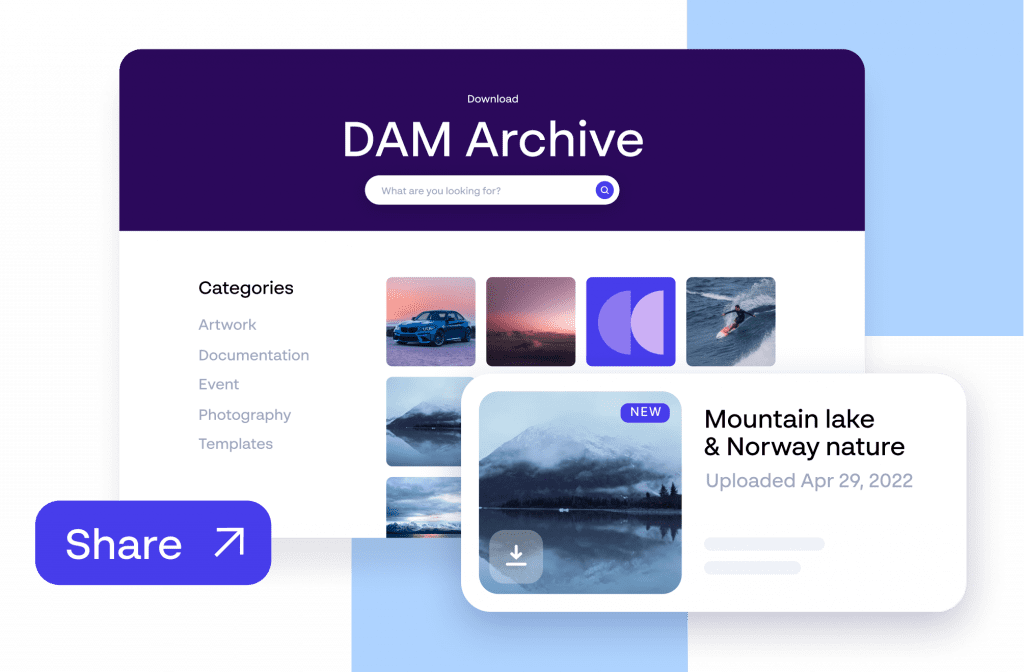Digital assets are indispensable valuables. They consume our surroundings more than we probably are aware of. In your private life alone, you have family photos, video recordings, insurance papers, banking papers, and personal papers to name a few. At work, any file you create, capture, copy or consume on your digital devices are considered digital assets. In 2020, this data required 64.2 zettabytes, in 2025 this number is expected to grow to more than 180 zettabytes.
Where is this data stored, and most importantly, how is this data stored? Do you have control of your digital assets, and are you prepared for the data growth?
Every company and every person has some sort of system for their digital assets, but the devil is in the details. How you do this means the world of difference and the impact when something backfires can be devastating.
Digital assets are valuables
Images are a good example of why digital assets are valuables. We constantly take pictures with our phones or cameras because we want to preserve a moment, whether it is of our kids, pets, partner, or a place. But then what? Do you store these images on your iCloud, Google Photos, or do you just leave them on the memory card?
Can anyone else access your images? What happens if you accidentally delete all images saved in your phone or your memory card is damaged? What good does it do to preserve Kodak moments if you’re the only one who can access them or even know that they exist? And do you have a backup plan if your assets are lost?
Now, let’s transfer these questions to every other digital asset and to your working life. Every file is created with intent, and time and resources have been invested in creating it. The value is within the cost of producing an asset, and how everyone in your company can benefit from using it.
Also read: This is how you organize your digital assets

Think about the hours employees spend creating files every day; presentations, sales offers, letters, images, videos and more. They all have a cost. Now think about the expenses that would occur if these assets were not distributed and made available for everyone else. Worst case scenario: everyone creates the same content repeatedly. Can you afford that? And how does that impact your operational efficiency? Time is money, and you don’t want your colleagues spending their time reinventing the wheel!
Manage your digital assets with care
Step up your game and treat your digital assets as valuables, your intellectual property, and make sure your digital assets are transparent and available for everyone in your company. How? With a digital asset management system.
Also read: Why digital asset management is important
Ignoring digital asset management can be costly
According to Project Manager News, the average cost of mismanaging digital assets is $10,000 a year. As assets are created by employees, assuming you don’t have a DAM-solution, it’s likely that your employees have created their own system for storing, organizing, managing, retrieving, and distributing digital assets.
Now, whenever someone needs an asset, time is spent searching for an asset without knowing exactly where it is stored, or perhaps they don’t know that the asset exists, and they end up creating their own version of it.
First, valuable time is wasted. Second, you risk employees creating something without any respect to the brand guidelines, and finally, your employees end up using old assets which disturbs your brand identity. Sounds familiar?
When managing digital assets properly there is huge cost-saving potential in addition to avoiding brand disruption of course… With a digital asset management system, costs and assets are under control.
Also read: Why managing digital assets and your brand steals time
Why you need digital asset management
Proper asset management is necessary and beneficial for your entire company. In addition to the above, there are several other benefits you should know.
- Reduce bottlenecks: Time is always a factor in the fast-moving digital world. With an asset management system in place, your assets are self-serviced. You don’t have to worry about limited resources or unavailability. Everything runs smoothly online.
- Reduce emails and one-to-one interruptions: With digital asset management, there is no longer any need to ask, “where is” or “do you know if we have?” and so on. Everything is available and prepared for download.
- Control your brand: Digital assets are usually branded with a logo. By storing and controlling your digital asset from one single location, you’ll also control your brand output.
- Losing assets is no longer an issue: When everything is collected in one central place, you’ll always stay in control of your company’s property, and you don’t have to worry about losing any.
Also read: What is digital asset management
Manage digital assets with proper asset management software
Knowing now that you can save money and increase operational efficiency with digital asset management, it only makes sense to go ahead and invest. A modern digital asset management solution provides the all-in-one central storage system that gathers, collects, structures, and distributes your company’s digital assets. If you’re still not convinced, check out our ROI calculator and check your company’s potential savings.
Want to learn more about how you can manage your digital assets? Check out our Resources area, where you’ll find material crafted by marketing experts, supporting you to activate your brand.
